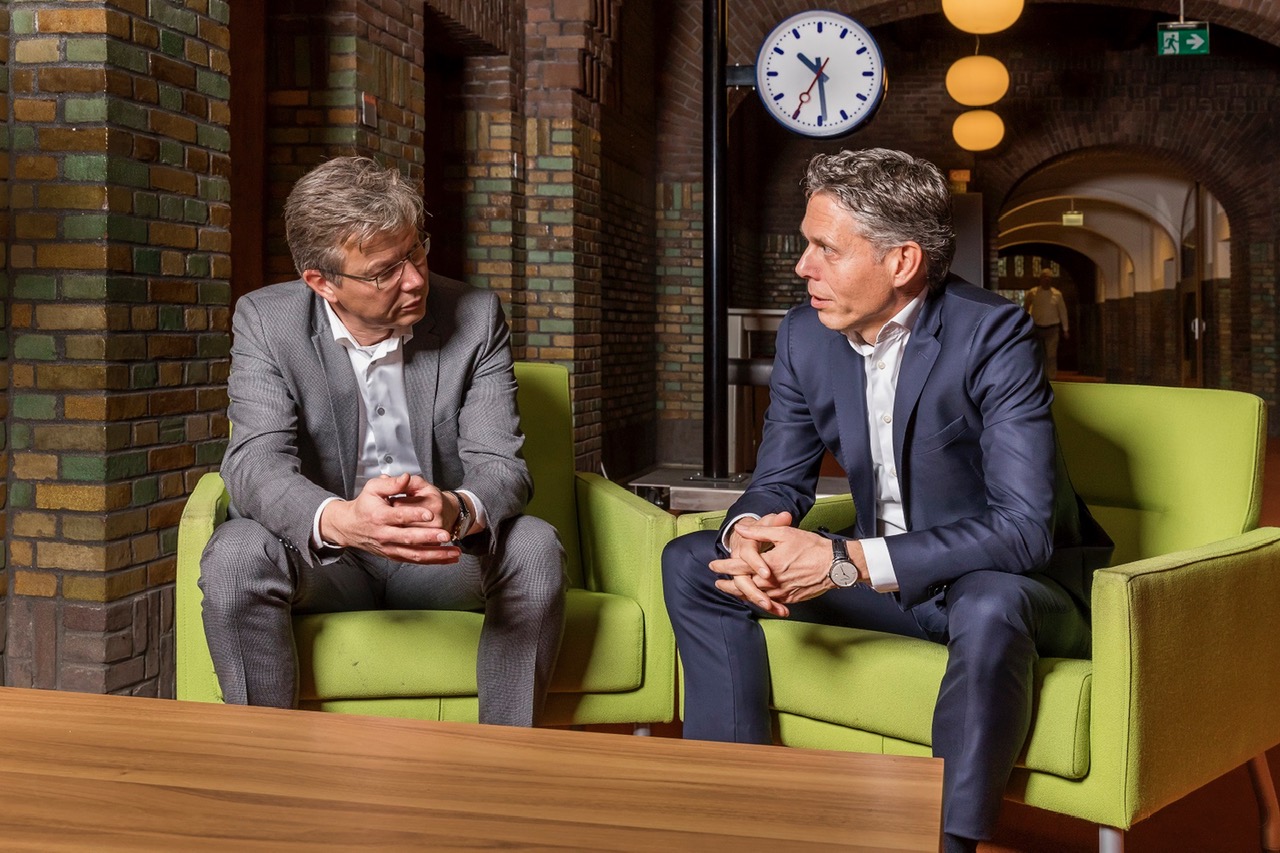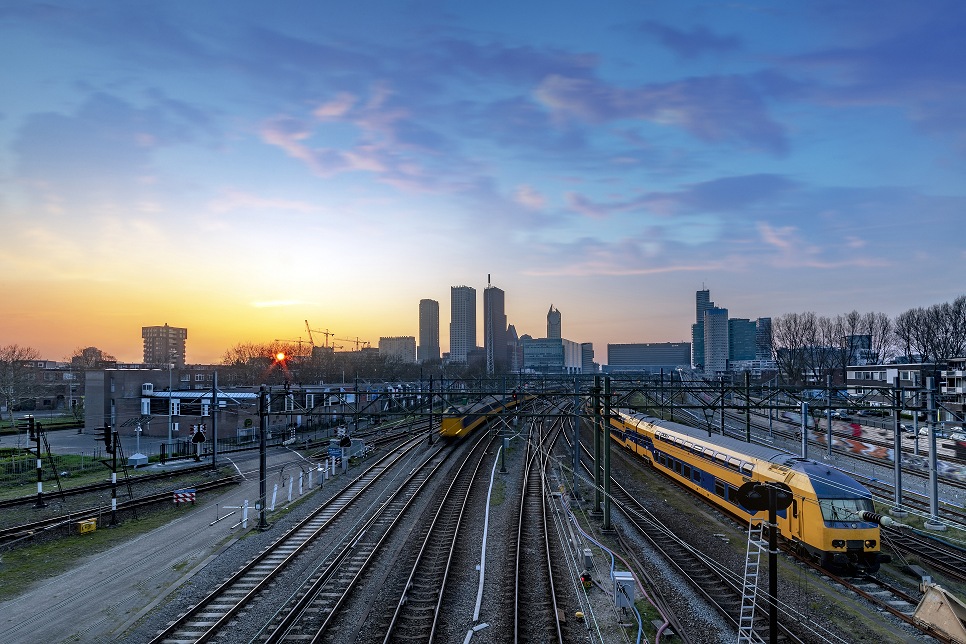
News
Smarter cities 'Carrying more than one million train passengers a day'
The challenge: increase rail capacity. The solution: make better and smarter use of available data
- 20 March 2019
"Laying down more infrastructure in the Netherlands? Our little froggy country can't take any more. It would be better to invest in IT and that way get the growth out," said Henk Bothof, director of ICT at ProRail. And that starts with the migration from VMS to Linux. InTraffic, a wholly owned subsidiary of ICT Group since early 2018, has been managing ProRail's vital systems for 15 years and is the main contractor for the migration project. "VMS is a very robust and reliable but somewhat older operating system. InTraffic got a younger generation enthusiastic about working on VMS as well. Steps were thus taken from proven technology to new technology. That led to a number of smart innovations, such as a system that supervises the entire out-of-service sector chain and a prediction system for points failures." Says Bert van Elburg, general manager at InTraffic: "We did that by combining data from our own and other systems." Despite these innovative IT applications and the reliability of VMS, the vast majority of systems are Linux-based. Bothof: "Because we want to make real technology strides into the future, we are phasing out VMS."
"Only with IT can we still increase rail capacity"
- Bert van Elburg, managing director at InTraffic
ERTMS
Linux is a first step toward the future. Another development that is going to change a lot on the railroads is ERTMS (European Rail Traffic Management System). ERTMS is the new international standard for train safety and consists of systems in both the train and infrastructure that can communicate with each other and traffic control. "This increases safety on the tracks and at the same time offers the possibility of more capacity on the tracks. With ERTMS, the intelligence comes into the trains and they start to drive in a way we already do on the road with cars: shorter lanes, so more capacity on the tracks to transport more people." But before that happens, it will require rebuilding current systems. "ERTMS offers possibilities to get information from the train about location and speed, but also to give commands to each train about how fast you should go. You get insight into a lot more information and you want to get that information available to everyone. Real-time and through all layers. That means we have to adapt existing systems. We're doing that with InTraffic, among other things."
Internationalization
Originally, railroads are very nationalistic. It has regularly happened that locomotives have had to be converted in connection with a different voltage abroad. Also, each country has its own train control system. But rail is evolving internationally; increasingly, rail travel is seen as a replacement for flying. That means that such an international train must be able to go through all those stretches like a big speeder. With ERTMS, which is seen as the standard for control and protection in almost all of Europe, this comes a lot closer. Bothof: "The Swiss are strong with development; we sometimes look enviously at the functionalities they have realized. And they in turn look with envy at the functionalities we have realized with InTraffic. What we want to move toward is to combine modules from the Swiss and ours and thus see if we can achieve more equivalent systems internationally."
"The Swiss are strong with development, we sometimes look enviously at the functionalities they have realized. And they in turn look with envy at the functionalities as we have realized them with InTraffic. What we want to move towards is to combine modules from the Swiss and ours and use that to see if we can achieve more equivalent systems internationally."
- Henk Bothof, Director of ICT at ProRail
Sustainability
Nice developments but it doesn't stop there. "Look at how the car industry is developing," Bothof continued. "If we want to remain the most sustainable modality, we not only have to get the passenger out of the car into the train, but we also have to work on sustainability ourselves." For example, looking at how a train stops on time. Steel on steel rolls out well, you can make good use of that fact. "With that you can save a lot of energy. We developed Routelint for ProRail, an application that tells the driver when the next signal is red and whether the train has a clear path. Especially with a freight train, which gets off to a slower start due to its large weight, this can save an enormous amount of diesel. The driver could never see that far ahead. With Routelint, this is the first time he can see if there is a train in front of him. For the driver, this is truly an innovation. This app allows a very simple way to anticipate signals or approaching trains. This is a great example of tying systems together to make better use and smarter use of the available data," Van Elburg says.
"The amount of opportunities that are released with better utilization and smarter use of data... No, there is no time to sit back."
- Henk Bothof, Director of ICT at ProRail
Reducing impact
InTraffic not only partners in designing, building and delivering software applications, but also does systems management. "The management teams are available to ProRail 24/7. Day or night, our people do everything they can to get the system running again," Van Elburg said. "The added value of our staff lies in the fact that they know the entire application landscape and don't just look at their own systems." Bothof nods. "You never hear from InTraffic: it's not in our systems so we can't solve it." ProRail, thanks in part to InTraffic, has its IT in good shape; the system is very reliable and it is looking to the future. But there is also room for improvement in the systems already running. "It's up to us to make sure the system just works," says Bothof. What Bothof is working on now with InTraffic is to design the system so that if it does fail, the impact is limited. "What you want is for it to be more compartmentalized, so that, for example, a failure is limited to one location and everything else just continues to function. In the next release for process control, the system that directly affects train control, we want to incorporate this." Making better and smarter use of the available data is already happening and is going to happen more and more in the future. "The amount of possibilities that are released with that... No, there is no time to sit back."


